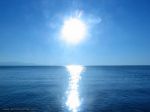
In physics, the concept that as the speed of a moving fluid (liquid or gas) increases, the pressure within that fluid decreases. Originally formulated in 1738 by the Swiss mathematician and physicist Daniel Bernoulli, it states that the total energy in a ...

